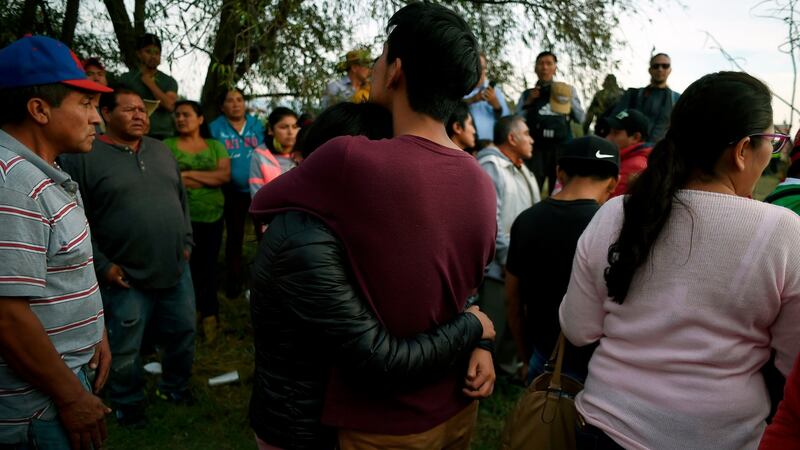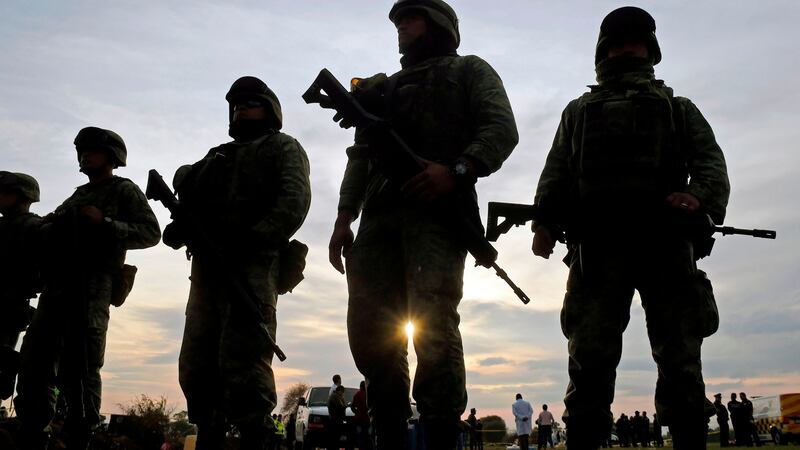A blast at a gasoline pipeline in Mexico that killed at least 79 people has put renewed attention on the government's strategy to stop fuel theft, with some relatives saying fuel shortages stemming from the plan led people to risk their lives.
Fuel thieves punctured the Tula-Tuxpan pipeline a few miles from one of Mexico’s main refineries on Friday. Up to 800 people flocked to fill plastic containers from the 7m-high (23ft) gasoline geyser that ensued, officials say. A couple of hours later, it exploded.
Mexican health minister Jorge Alcocer said on Sunday the number of dead in the incident had risen to 79 people.
Sobrevolando el lugar de los hechos ocurridos en Tlahuelilpan. Estamos aplicando todas las medidas necesarias para atender a la población de la zona. pic.twitter.com/ptPGOGLbF5
— Omar Fayad (@omarfayad) January 19, 2019
Half a dozen people interviewed by Reuters on Saturday said their relatives had gone to the leaking duct in Tlahuelilpan district in Hidalgo state because they struggled to find fuel elsewhere and were desperate to fill up car tanks to get to work or run their farms.
"A lot of innocent people came here, perhaps their car didn't have enough gasoline for tomorrow, and they said I'm just going to go for a few litres," said farmer Isidoro Velasco (51), who was waiting for news of his nephew Mario Hidalgo, who he believed was likely dead. Mr Hidalgo had turned 34 on Saturday.
Late last month, President Andres Manuel Lopez Obrador launched a programme to shut down an illegal fuel distribution network that siphons off about $3 billion (€2.64 billion) worth of fuel annually from state oil firm Pemex.

The plan, which involves shutting off pipelines compromised by gangs who fit valves to drain fuel, led to widespread gasoline shortages in central Mexico in January, including in Hidalgo, to the north of Mexico City.
On Saturday, most gas stations in Tlahuelilpan were closed.
Public support
Polls show the measures have until now enjoyed fairly broad public support, despite the difficulties and long lines at gas stations.
The disaster in Tlahuelilpan, however, has brought renewed scrutiny of the strategy. Mr Lopez Obrador has faced repeated questions about the disaster, demanding he explain why soldiers deployed to guard the duct did not chase people away from the leak and how quickly supplies to the duct were cut after Pemex detected the leak.
Pemex chief executive officer Octavio Romero said on Saturday a valve had been closed at the pipeline once a drop in pressure from the leak had been noted, but he did not say at what time that happened. Fuel spurted from the pipeline for about two hours before it exploded, with no visible loss of pressure.
Mr Romero said about 10,000 barrels of high octane gasoline were in the section of the pipeline between the Tula refinery and the village when it blew up on Friday.
The defence ministry and Mr Lopez Obrador said there were only 25 soldiers present and the army did not want to hold back the crowd. Critics say authorities should have been firmer in controlling the crowd and sealing the area, and should have called for reinforcements.
“Part of the blame goes to the people (at the ruptured pipeline), but the bigger blame lies with authorities who let them go there knowing it was dangerous,” said Mr Velasco, the farmer.
The Tula-Tuxpan pipeline delivers fuel to other central states, raising the possibility that its closure for repairs after the explosion could worsen fuel supply problems, including in car hub Guanajuato.

Mr Romero said the pipeline had been out of service since late December as the government had tried to secure it from gangs who had hit it 10 times in Tlahuelilpan municipality. Since they began reopening it on January 16th it had been hit four times he said.
All possibilities investigated
In response to a question about whether cartels present in Hidalgo, which include Los Zetas and the Jalisco New Generation Cartel, might have caused the disaster in revenge for the clampdown, the president said all possibilities were being investigated.
However, one federal police source in Hidalgo said he believed the hole in the duct was made by local criminals, not major cartels.
Mr Lopez Obrador said the disaster had hardened his resolve to fight fuel theft and the government was looking at ways to strengthen ageing pipelines to make it harder to illegally suck fuel from them. Meanwhile, he said, Mexico was buying more tanker trucks for road distribution.
“Even though it hurts a lot, we have to carry on with the plan, to end fuel theft,” he said. – Reuters














